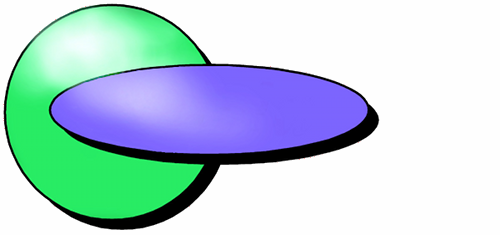

At EnergySense, we apply our scientific expertise to your problems.
Capability Statement |
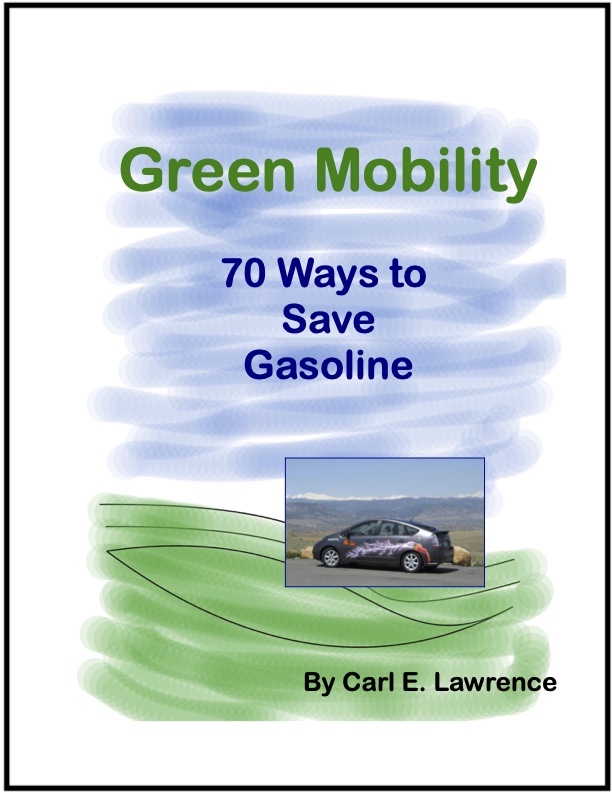 | Saving Gasoline Handbook - Free download of 2010 edition |
 |
Fundamentals Energy is a quantity, Energy is conserved (in classical physics), Power is the rate at which energy is used, and Energy is everywhere and in everything. Applications Purchased energy includes gasoline, electricity, ethanol . . . Free energy includes solar-electric, solar-thermal, geothermal . . . Energy efficiency produces more comfort, less noise, better smells . . . Byproduct of purchased energy is always heat. |
If you look out over a long distance at night, you might see a porch light fifteen or twenty miles away. That single source of light is radiating in all directions and an extremely small portion of that electromagnetic spherical wave has entered your pupils. And only a small portion of the total radiated energy from the porch light is at frequency that you can see. When you look in that same direction during the day, you will see uncountable sources of light. Everything you see is radiating and reflecting EM energy in all directions. This visible energy, and the non-visible energy saturates everything, with most of it passing through you or bouncing off. You would instantly freeze if it weren't for this sea of electromagnetic energy we all live in. |
 |
|
How to Build a House for Comfort and Efficiency Thermal Capacity and Potential for Freezing of a Passive Solar Hangar |
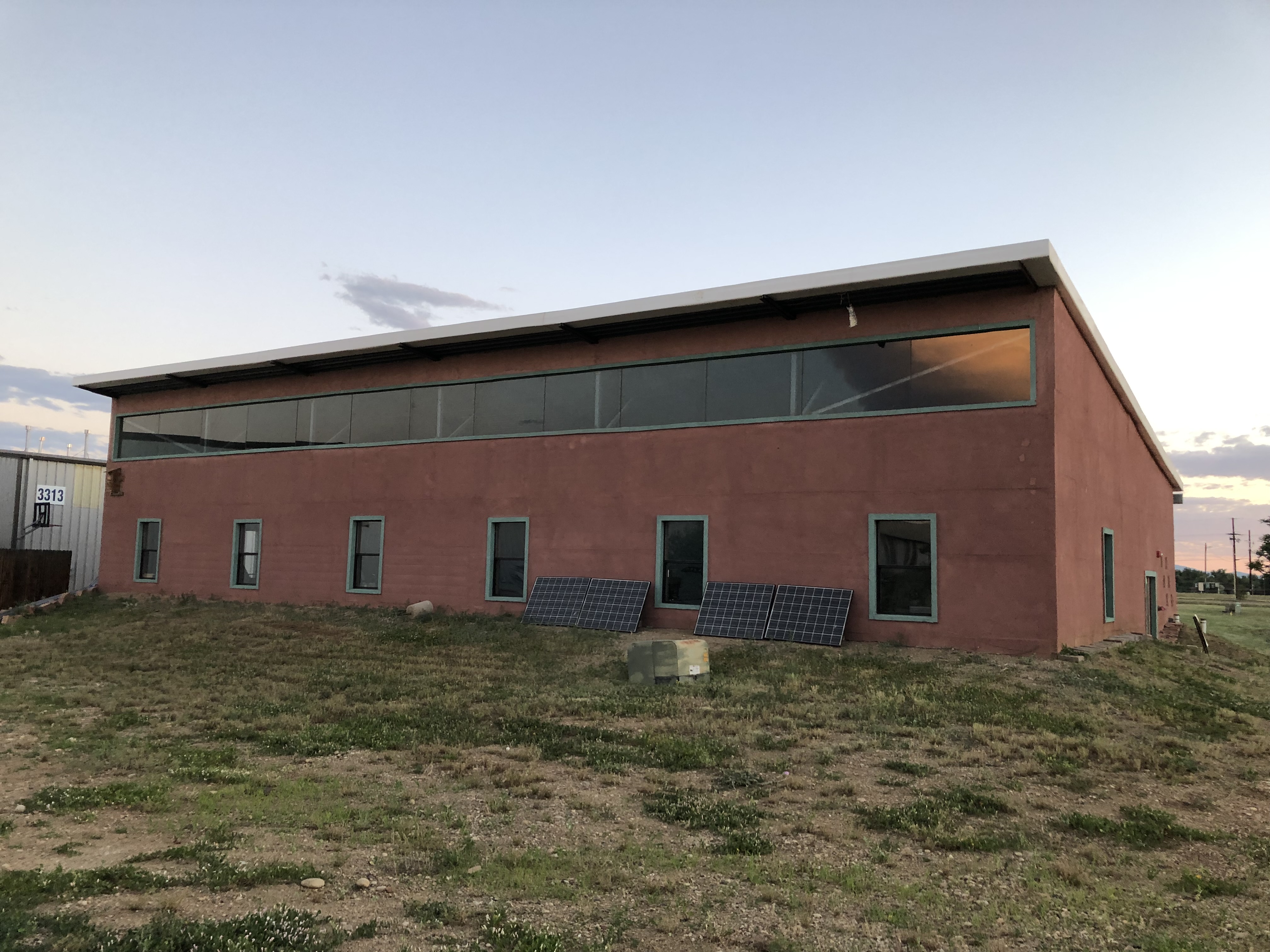 Solar Hangar | EnergySense designed this aircraft hangar for Solar Hangar, LLC in 2017. This structure maintains an average temperature of 60° F, plus or minus 20° throughout the year, solely through passive solar and geothermal energy. Over the past four years, the coldest temperature ever observed was 39° F following an overnight low of -8° F. The highest temperature observed in the hangar was 80° F while the outside temperature was over 100° F. This thermal comfort was achieved with the extensive use of thermal mass, geothermal connection and exterior insulation. The Solar Hangar is constructed with six inch thick concrete walls and floors. The exterior walls are covered with three inches of rigid foam insulation and the roof is covered with six inches of the same insulation. Placement of the insulation on the exterior of the building's thermal mass creates a container for the thermal energy within the building. |
 Electric Aircraft motors | Reliability is absolutely critical for an electric aircraft propulsion system. Although, the majority of propulsion electric motors are extremely energy efficient, there is still a large quantity of waste heat to remove. The most reliable method is to conduct the waste heat directly from the motor's electromagnets to the external airflow − with no intermediate fluids, pumps or radiators. This can be done using a switched reluctance motor with the electromagnetic stator thermally connected to the motor housing, which is in the external airflow. The motor housing would be streamlined with fins. Using the switched reluctance motor also eliminates the costly neodymium magnets, since under a severe overheating event these magnets would permanently lose their magnetism. Eliminate heavy cabling and connections by placing the motor controller inside the motor housing. This design approach has eliminated several components of questionable reliability and increased the aerodynamic efficiency by eliminating the old engine cowling and any draggy radiators. |
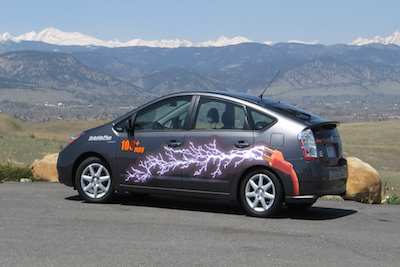 Plug−in Hybrid−electric | Eetrex spun out of EnergySense in 2006, in order to develop and produce plug-in hybrid-electric vehicles. About a dozen Toyota Priuses and over 70 Ford Escape hybrids were converted with the installation of much larger lithium battery systems and battery chargers. With the use of electrical energy from the grid, the vehicle's consumption of gasoline was cut by more than half. The Prius PHEVs averaged 100 miles per gallon and the Ford Escapes PHEVs averaged 70 mpg. Eetrex also developed a bi-directional charger, or Inverger, to return electrical energy to the grid when requested. These products led to their later adoption by the automotive industry. |
 Electric Shuttle Bus | Columbine Bus spun out of EnergySense in 1995 in order to develop and produce hybrid-electric shuttle buses for the Denver RTD. This was probably the first fleet of hybrid-electric buses ever manufactured. The fleet of shuttle buses was employed on the 16th Street Mall in Denver and had about 55,000 boardings per day. Over the 25 years of service, five and a half million gallons of fuel were saved and 100 million pounds of CO2 were eliminated, compared to the earlier Diesel fueled buses. |
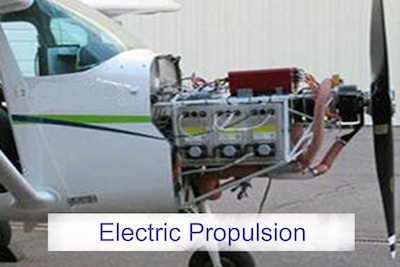 Electric Aircraft | In 2010 EnergySense was ask to manage the engineering team tasked with converting a Cessna 172 Skyhawk to electric propulsion. Although the Skyhawk conversion made several test flights, the inefficient airframe limited it's time aloft. This testbed was used to validate many of the components that were used later in the development of the type certified eFlyer at Bye Aerospace. To learn more about the Bye eFlyer and other Bye electric aircraft, visit the Bye Aerospace website |
 Automated Transit | SwiftATN is an ongoing startup company that spun out of EnergySense in 2012. The primary goal of Swift is to shift fixed-guideway transit to energy efficient, automated transit. We believe a suspended coach, electric powered, automated transit network is the most energy efficient form of mass transit conceivable today. The power required for a fully loaded, 22 passenger coach to travel at 35 mph is equivalent to those 22 passengers riding bicycles at 12 mph. Lighter, streamlined coaches use lighter guideways with support towers 100 feet apart, leaving most of the right-of-ways free for vegetation and other uses. |
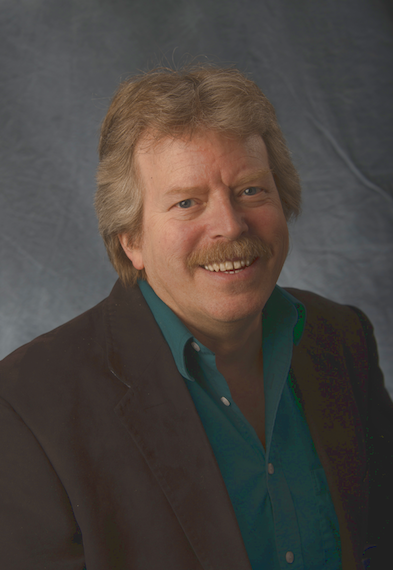 Carl Lawrence, Chief Scientist & President We are not hiring at this time. |
30+ years of experience Masters in Business Administration BA Physics Mechanical Engineering Commercial General Contractor class B AutoDesk Mentor − AutoCAD and Inventor Drafting Diploma (pencil and paper) Private Pilot Commercial Drone (UAS) Pilot LinkedIn 'Carl Lawrence' |